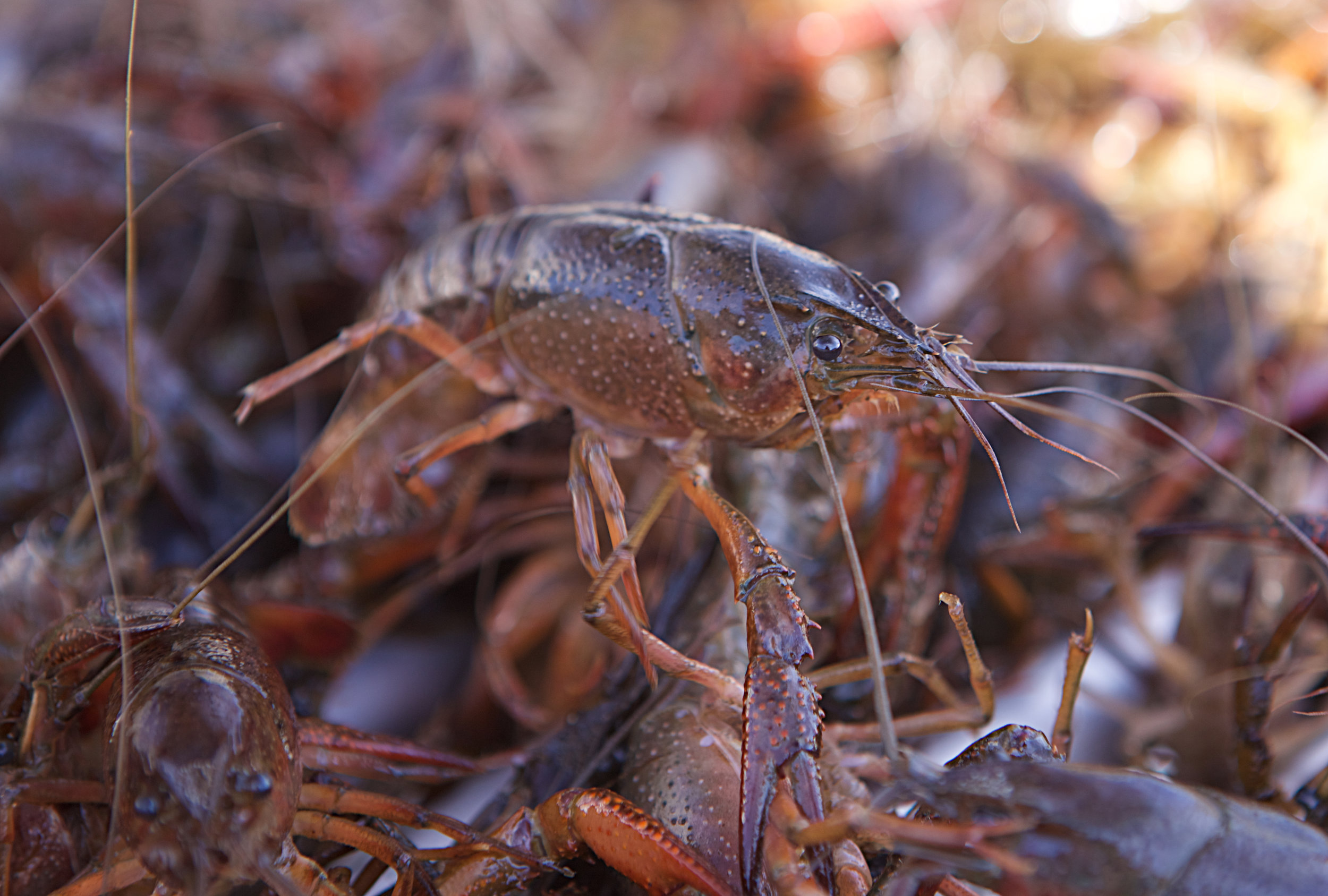Crawfish
HISTORY
Native Americans were the first credited with harvesting and consuming crawfish in Louisiana before the Cajuns arrived in 1751.
Native Americans used to bait reeds with venison (deer meat), stuck them in the water and periodically picked up the reeds with crawfish clinging to the bait. By using this method, the Native Americans caught bushels of crawfish to eat.
Historical records show sugarcane plantations in New Orleans in the late 1700s used small ponds to grow crawfish.
Although both Native Americans and Europeans consumed crawfish for centuries, commercial sale of crawfish in Louisiana only began in the late 1800s. At that time, fishermen harvested wild crawfish from the natural waters of the Atchafalaya Basin.
During the 1930s, with the development of improved transportation and cold storage, crawfish markets in Louisiana shifted from local consumption in rural areas to metropolitan areas like Baton Rouge and New Orleans. During this same period, the use of crawfish nets resulted in much more efficient harvest methods.
By the 1950s, the crawfish trap was widely used and the practice of reflooding rice fields after harvest became commonplace as a method to grow crawfish during autumn, winter and early spring.
This practice of crawfish farming eventually spread to impounded woodlands and marshland, as well. By the mid 1960s, acreage had increased to approximately 10,000 acres of managed crawfish ponds.
An industry based on peeling crawfish was established at this point, which in turn fueled further expansion of both crawfish farming and wild harvests. Acreage continued to increase, from approximately 44,000 acres in the mid 1970s to current levels of roughly 116,000 acres.
Limited harvests of farmed crawfish also occur in other states, such as Arkansas, South Carolina and Texas. Official estimates are not available, but industry observers suggest that Louisiana typically accounts for 90% of total U.S. production, depending on the season.
PRODUCTION
Crawfish are both fished—from natural rivers, bayous, swamps and lakes—and farmed. The main farmed species in the U.S. is the red swamp crawfish.
Crawfish aquaculture in Louisiana involves two species: the red swamp crawfish and the white river crawfish. Both species are native to the region and well-adapted to coping with the wet-dry cycle found throughout much of the Gulf coastal plains.
Crawfish ponds are usually flooded in late September or early October.
Harvesting crawfish from ponds is very labor intensive and costly. The most efficient trap for ponds is the pyramid trap.
A crawfish combine is a specially equipped boat with a hydraulic wheel powered by a small gasoline engine that pulls or pushes the boat through the pond. As the boat moves through the pond, the fisherman picks up the trap and empties the crawfish.
The U.S produces 60,000 metric tons of crawfish annually, with 90% of that coming from Louisiana. In a typical year, 88% of all crawfish produced in Louisiana come from aquaculture ponds and 12% come from the wild.
NUTRITION
Crawfish boils in Louisiana are all about gatherings and great taste.
Crawfish are an excellent source of high-quality protein. They are also low in calories, fat and saturated fat. Crawfish are a good source of vitamins too. Crawfish muscle fibers are shorter than the muscle fibers in red meats and are more easily digested.
A diet rich in seafood has been shown to reduce the incidence of Alzheimer’s, angina, stroke, asthma, heart disease and cancer.
FUN FACTS
Crawfish (Procambarus clarkii), also called crayfish, crawdads and mud bugs, are freshwater crustaceans found on every continent except Africa and Antarctica. In appearance, they greatly resemble lobster, but are much smaller. Crawfish range between 3-10 inches in size depending on the species and location.
Crawfish grow throughout a series of molts by which they shed their exoskeleton and produce a new one. A crawfish nearly doubles its size with each molt.
Crawfish dig simple vertical burrows that are up to 40 inches deep. These burrows serve as refuges from predators and provide a moist environment for them to survive dry periods.
CLASSIFICATION
Kingdom: Animalia (animals)
Phylum: Arthropods (crustaceans, insects, spiders, etc.)
Subphylum: Crustacea (Crustaceans)
Class: Malacostraca (crabs, pill bugs—roly polies)
Order: Decapoda (10 legs; lobsters, shrimp, crabs)
Family: Cambaridae
Genus: Procambarus
Species: + 450
ANATOMY
Crawfish Anatomy / Photo credit WAFB 9News Louisiana Weekend.
TERMS TO KNOW
Crawfish Combine - a specially equipped boat with a hydraulic wheel powered by a small gasoline engine that pulls or pushes the boat through the water
Hydraulic Wheel - mechanism that converts fluid energy into mechanical power
Molt - when crawfish shed their exoskeletons to increase in size
Pyramid Trap - a trap shaped like a pyramid that has a collar at the top, which prevents escape and allows it to be lifted easily
RECIPE
Crawfish Étouffée
Ingredients:
¼ cup margarine or butter
1 cup finely chopped onions
2 ½ cups water
½ cup chopped green onion tops
1 pound crawfish tails
2 teaspoons cornstarch
½ cup water
chopped parsley or parsley flakes
steamed rice
Directions:
Melt margarine in a Dutch oven over low heat.
Add onions; cook until clear.
Add 2 cups water and bring to a boil.
Add crawfish tails and green onion; cook over low heat for 5 minutes, stirring occasionally.
Add seasoning to taste. Dissolve cornstarch in ½ cup water; pour into gravy.
Allow to simmer for 15 minutes, stirring occasionally.
Remove from heat; sprinkle with parsley.
Stir; let set for a few minutes. Serve over steaming rice.
Note: Shrimp may be substituted for crawfish.
Foods à la Louisiane—a cookbook by the Louisiana Farm Bureau Women
Submitted by Pat Cain of St. Landry Parish
COLORING PAGE
Select the image below to download, print and color this fact sheet. Fit-to-page printing option recommended. See more commodity coloring pages!
MAKES & TAKES
Crawfish Chimneys
SOURCES
LSU AgCenter



